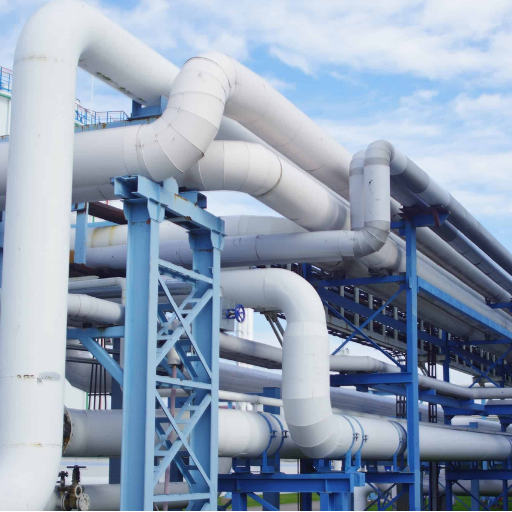The hydrogen pipeline is integral to the world’s shift to cleaner energy. The article, therefore, explores the basics of hydrogen transport, carbon emissions reduction, and improved energy security. In addition, this paper will examine the technologies supporting hydrogen pipelines and their challenges and possibilities for changing energy regimes. By so doing, readers will appreciate how this new approach can assist in pursuing net-zero emissions and sustainable energy.
What is a Hydrogen Pipeline?
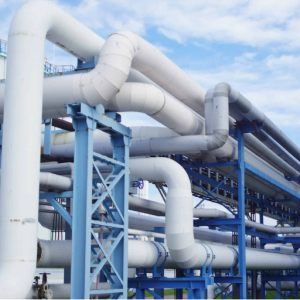
Image source: https://arvengtraining.com/
A hydrogen pipeline is a unique system that transports hydrogen from production plants or storage sites to end users like industrial clients or power distribution networks. These pipes are built with properties that can handle such small molecules as hydrogen, which have high diffusivity, making it hard to control leakage and material compatibility concerns. On the contrary, other types of pipelines carrying natural gas or oil require specific materials plus technologies to be utilized in order not only for them to be safe but also to make effective deliveries possible. Eventually, these pipelines play a significant role in making hydrogen a widely used source of clean energy necessary during the transition into sustainable future energy sources.
How does a hydrogen pipeline differ from a natural gas pipeline?
Natural gas and hydrogen pipelines primarily differ due to hydrogen’s physical and chemical properties. The first is its smaller molecule size, which makes leakage more likely. Consequently, unique embrittlement-resistant materials are often required for hydrogen pipelines rather than natural gas ones. Second, pressure adjustments may be necessary for safety and efficiency, especially concerning pipeline integrity and flow rates.
Moreover, thermal conductivity varies significantly for hydrogen and demands different thermal management practices to avoid heat losses. Finally, the infrastructure for hydrogen transport is still in its infancy, which means there are differences from established regulatory frameworks, safety standards, and operational protocols for natural gas networks. However, these pipelines play a critical role in energy transportation, although they pose unique challenges that require separate engineering solutions to guarantee safety and reliability during hydrogen transportation.
What materials are used in hydrogen pipelines?
Typically, we apply hydrogen-resistant materials in these hydrogen pipelines to avoid the danger of leakage and brittleness. Some commonly used materials include high-strength steel, such as ASTM A335 or ASTM A106, specifically designed to resist the effects of hydrogen cracking. Even composite material and polyethylene are emerging as alternative materials because they are lighter and do not rust. It’s, however, vital for us to choose suitable materials that will ensure pipeline safety while at the same time continuing to meet performance standards.
Why is hydrogen transport important for the hydrogen economy?
Hydrogen transport forms the basis for a hydrogen economy by helping distribute this versatile energy carrier needed for decarbonization across various sectors. Effective transportation systems make it possible to integrate renewable sources of energy where excess electrical energy is converted into H2 gas and stored for future use, thus balancing demand and supply. Besides, a robust hydrogen transport infrastructure can enable the scaling-up of hydrogen for industries like transportation, heating, etc, that are very relevant to climate change mitigation efforts. In addition, as a potential greenhouse gas, it reduces significant amounts of effective hydrogen transport, enhances energy security, and promotes new technologies and industries related to hydrogen production, usage, and transport, fostering economic growth.
How Safe is Hydrogen Pipeline Transport?
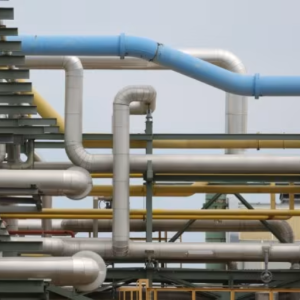
The level of safety in Hydrogen Pipeline Transport is seen as safe due to strict regulations that exist within its industry, including design codes. Modern hydrogen pipelines can withstand high pressures, often constructed from materials that can resist embrittlement caused by hydrides. Additionally, regular maintenance and monitoring need to be done to detect leaks or weaknesses that may present in an existing plant or line. Measures such as automatic shut-off valves and leak detection systems are also implemented to reduce risk. Nevertheless, ongoing research programs concentrate on improving safety protocols further while educating top management about best practices during handling and how this energy carrier is transported effectively without any risks involved.
What are the standard safety concerns with hydrogen pipelines?
A common concern in the safety of hydrogen pipes is the risk of leaking, which may lead to an explosive mixture when the gas is exposed to the atmosphere. Low ignition energy and high diffusivity make hydrogen a hazardous fire hazard. Another reason is the hydrogen embrittlement of pipeline materials, which can weaken structural integrity over time, especially under high pressures. Also, contaminants have adverse effects on hydrogen quality and infrastructure integrity. In conclusion, handling personnel not trained in this kind of infrastructure results in a threat, thus emphasizing the importance of proper training and observance of safety processes. Regular inspections and maintenance must be considered to address these issues safely.
How is hydrogen embrittlement managed in pipelines?
Hydrogen embrittlement in pipelines is addressed through material selection, design considerations, and maintenance practices. Using materials resistant to hydrogen-induced cracking, such as certain high-strength steels or alloys, is essential. Additionally, pipeline design often incorporates factors like reduced stress levels using appropriate coating techniques for environmental protection due to its unique properties, such as low stress levels and adequate coating techniques for environmental protection against it. These are some other ways that pipeline designs cater to hydrogen-specific characteristics. Inspection programs should, therefore, be periodic so that early signs of embrittlement or structural fatigue can be detected on time before any accident occurs. Using preventive measures such as controlled environments with reduced moisture and contaminants further improves the longevity and safety of hydrogen pipes. Lastly, modern methods dealing with hydrogen embrittlement include innovative materials research and developing protective coatings.
What safety standards are in place for hydrogen pipelines?
Safety standards for hydrogen pipelines are primarily governed by federal regulations, industry guidelines, and international standards to ensure safe handling during transportation. This is done through a combination of federal regulations guided by national standards issued by different agencies, including industry guidelines from professional bodies like the American Society for Testing Materials (ASTM), among others; international organizations like the International Organization for Standardization (ISO), National Fire Protection Agency (NFPA) and International Institute of Refrigeration (IIR). Therefore, in the USA, the Department of Transportation (DOT) controls the safety of hydrogen pipelines through the Pipeline and Hazardous Materials Safety Administration (PHMSA). PHMSA enforces regulations outlined in the Code of Federal Regulations (CFR), precisely Title 49. Another example is NFPA 2, which provides hydrogen technologies and safety procedures guidelines. Internationally, ISO has developed standards such as ISO 14687, which focus on ensuring a safe fuel supply of hydrogen that meets specific criteria for safety and performance. These regulations are supported by ongoing risk assessment protocols and best practices that promote the safe design, construction, and operation of hydrogen pipelines.
Integrating Hydrogen into the Existing Gas Infrastructure
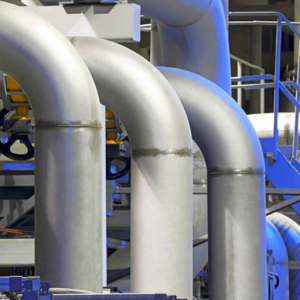
Integrating hydrogen into the existing gas infrastructure involves converting or adapting current systems to accommodate hydrogen’s unique properties, which includes retrofitting pipelines and storage facilities for handling higher pressures and different material compatibility. Blending it with natural gas is a common approach that provides immediate integration while reducing carbon footprints by leveraging existing infrastructures. In addition, strict monitoring and safety protocols ensure effective management of any possible hazards related to hydrogen flammability and embrittlement. Collaborative efforts between governmental, industrial, and research entities are vital in developing strategies and technologies that facilitate this transition toward a sustainable energy future.
Can existing natural gas pipelines be used for hydrogen transport?
They can also be used on pre-existing lines only if various conditions are met. New guidance has shown that many pipes are already compatible with hydrogen, particularly those of low-carbon steel. However, pipeline age, material integrity, and the percentage of hydrogen blended with natural gas can all affect safety and efficiency. Some studies have found that blending small concentrations of up to 20% hydrogen into natural gas can be done safely in many instances, making this option a viable gradual transition. More extensive changes may also be needed for complete hydrogen transport, including inspecting and retrofitting pipeline systems to enhance their resistance against hydrogen embrittlement. In summary, while there are potential ways in which existing infrastructure could be utilized for transporting hydrogen, thorough evaluation coupled with prudent engineering practices is needed to facilitate safe and efficient operations.
What is hydrogen blending, and how does it work?
Hydrogen blending refers to mixing natural gas with small amounts of hydrogen before pipeline transportation occurs. The gradual integration of H2 within the existing NG supply infrastructure enables an easy shift towards a low-carbon development path. Combining up 20% without the need for considerable alteration in old pipelines makes this method attractive to utility firms in their quest for reduced carbon emissions. The process also requires close follow-up on the composition of gases to ensure safety and efficiency. Since this gas has properties distinct from natural gas, it has lower energy density and higher susceptibility to embrittlement in some materials. As the share of hydrogen in the gas supply increases, further research and adaptation would be necessary to cope with delivery and usage-related technical challenges.
What modifications are needed for existing pipelines to transport hydrogen?
Some changes should be made to move hydrogen effectively through the prevailing pipelines. My research from top sources shows an essential concern about hydrogen embrittlement, which weakens materials used in conventional natural gas lines. Therefore, I would need to look at pipeline materials and possibly consider coatings or lining systems more resistant to hydrogen attack. Moreover, pressure management systems need to be upgraded to prevent leakages since H2 can diffuse through materials that are much more accessible than NG. Lastly, regular maintenance and monitoring protocols will be necessary to ensure the integrity and safety of the pipeline network as it transitions into a hydrogen-carrying system.
Building a National Hydrogen Pipeline Network
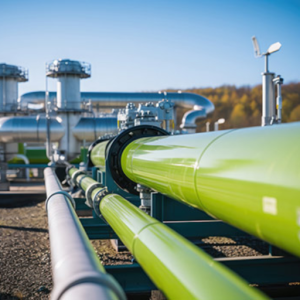
Some fundamental steps must be taken to have a national network of hydrogen pipes. First and foremost, an extensive feasibility study should be conducted to help determine the most efficient routes possible, anticipated demand levels along these routes, and integration with existing infrastructure. The second involves setting up regulatory frameworks to ensure safety and environmental standards compliance. To secure support and share resources, there is a need for collaboration with stakeholders such as energy firms and government departments, among others. Investing in R&D is instrumental in developing technologies that enhance hydrogen transport’s efficiency, safety, and reliability. Finally, phased implementation of the network can facilitate gradual scaling, allowing for adjustments based on operational feedback and evolving technological advancements this will allow.
What is the European Hydrogen Backbone?
European Hydrogen Backbone (EHB) is a proposed long-distance network comprising pipelines aimed at enabling the transportation of green hydrogen across Europe by integrating various production sources and connecting regions with supply-demand balance for their utilization locally or foreign trade. This initiative seeks to develop an H2 Infrastructure supporting decarbonization objectives under the European Green Deal towards sustainable hydrogen economy development. It is expected to run parallel with existing gas pipelines but also includes repurposed natural gas pipelines and new ones, thus promoting cross-border trade among member states involving this gas form, mainly using Europe. The EHB is a strategic blueprint that aligns public and private investments and unlocks all the possible benefits of green hydrogen as a clean energy source in different fields, including industry, transport, and residential.
What are the critical challenges in developing a national hydrogen pipeline network?
Creating a national hydrogen pipeline network is fraught with several key challenges. In the first place, infrastructure investment is significant since the construction and repurposing of old pipelines require huge financial commitments over long durations from both the public and private sectors. Secondly, regulatory hurdles exist because harmonizing standards for hydrogen transportation, safety regulations, and licensing across different jurisdictions could complicate development efforts. Thirdly, technology-related issues arise for pipeline materials, whereby hydrogen may cause embrittlement in certain metals; hence, innovative measures are required to ensure that the infrastructural integrity and safety are maintained. Lastly, market demand uncertainty poses a challenge since an extensive network depends on the growth of hydrogen markets and its acceptance by end-users in different sectors.
What role does government policy play in hydrogen infrastructure development?
Government policy is critical in fostering hydrogen infrastructure development by providing regulatory frameworks, financial incentives, and strategic guidance. Policymakers can encourage investments through grants, subsidies, and tax credits that target both public and private parties, thereby reducing financial entry barriers. Additionally, establishing definite regulatory benchmarks facilitates security while raising investor confidence and customers’ trust in this energy-related investment. Governments can also promote the use of hydrogen gas in various areas like the transport sector or industrial sector by adopting these policies, such as regulations that mandate or require that hydrogen be used within it, thus encouraging its use at scale. Generally speaking, government support is vital for setting up an enabling environment upon which backgrowth in this kind of aftermath can thrive, and technologies can thrive to hasten the transition into a hydropower economy.
The Role of Hydrogen Pipelines in the Hydrogen Economy
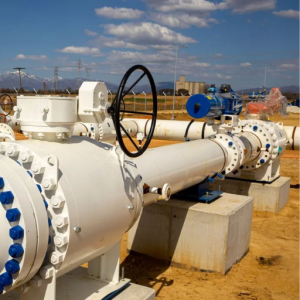
Hydrogen pipelines are the necessary lifeblood of the hydrogen economy, being dedicated, efficient transport routes from production sites to end-users. Their development helps scale hydrogen distribution into a “clean” carrier for use in different sectors. By ensuring uninterrupted supplies of this gas, they help alleviate logistics difficulties and underpin the transition to the decarbonized power system. In addition, building an extensive hydrogen pipeline network would contribute to the increased integration of renewable energy sources by enabling excess energy storage and transportation via hydrogen. Taken all together, apart from developing infrastructure and supporting market growth with investments in H2-linked technologies.
How do hydrogen pipelines support renewable energy goals?
To make this possible, there is a significant reliance on hydrogen pipelines that provide a flexible way of transporting energy generated from renewables, including wind or solar power. By so doing, pipelines allow for balancing supply and demand and remedying intermittence challenges associated with renewable energy generation. It also facilitates access to hydrogen by various sectors, such as transport and industry, leading to substantial GHG emissions reduction. Another advantage of having an established network of piping systems includes stimulating investments in green power development, which encourages innovation throughout its sectorial value chain. These pipes are meant to bring renewable energy within the larger power scene, thus helping shift towards sustainable low-carbon economies.
What is the future outlook for hydrogen pipeline infrastructure?
The prospects appear bright for hydrogen pipeline infrastructure because it is crucial for achieving our objectives of transitioning away from fossil fuels. Observing current trends, it can be concluded that an expanded coverage area will support efforts aimed at decarbonization and ensure greater energy resilience. The fact that more funds are being invested in this area has been supported by policies promoting investment in the development of infrastructure for use in producing hydrogen fuel cells. The policy framework aimed at encouraging government institutions to research private synergies strategic partners between academia, industry governments, think tanks, and others). With the increasing demand for low-carbon H2 across economic sectors, including heavy industries, I believe closer partnerships between governments (including policymakers), businesses, and the scientific community will promote innovations and scale hydrogen pipeline projects. Consequently, this consolidated approach is essential for unlocking the full potential of hydrogen and making it the cornerstone of our sustainable energy future.
How does hydrogen transportation impact the hydrogen market?
Hydrogen transportation significantly affects the hydrogen market because it facilitates the movement of hydrogen from its production points to the final users. The cost, accessibility, and overall supply chain of hydrogen are affected by the logistics used in its transportation. This includes findings from industry trends that indicate that improved means of transport, such as pipelines and special trucks, reduce delivery costs, leading to increased adoption across various spheres like industrial use and fuel cell vehicles. Furthermore, expanding hydrogen infrastructures further cements its place as an economically viable commodity within existing energy systems, creating a more sustainable demand-driven market. Thus, adequate hydrogen transportation lowers logistic barriers attracting investment, speeding up the switch to a hydrogen-based economy.
Reference sources
- Hydrogen Pipelines – U.S. Department of Energy
- Stakeholder Communications: Hydrogen – PHMSA
- Exploring the Hydrogen Midstream: Distribution and Delivery – CSIS
Frequently Asked Questions (FAQs)
Q: What is the significance of the hydrogen pipeline in the context of clean energy?
A: The hydrogen pipeline is crucial for transporting clean hydrogen efficiently over long distances, facilitating the widespread use of hydrogen as a renewable and clean energy source.
Q: How is the safety of the hydrogen pipeline ensured?
A: Pipeline safety is maintained through stringent regulations and advanced technologies overseen by the Department of Energy and other regulatory bodies, ensuring the secure transport of hydrogen.
Q: What are the challenges associated with the transport of hydrogen?
A: Transporting hydrogen, whether in gaseous or liquid form, poses challenges, such as requiring specialized materials for pipelines and storage to prevent leaks and ensure safe delivery.
Q: How does the hydrogen network integrate with the existing gas network?
A: The hydrogen network can integrate with the existing gas network by blending hydrogen into natural gas pipelines, allowing for a gradual transition to a hydrogen-based energy system.
Q: What is the role of liquid hydrogen in the hydrogen pipeline infrastructure?
A: Liquid hydrogen plays a vital role in the pipeline infrastructure due to its higher energy density and ease of transport over long distances compared to gaseous hydrogen.
Q: How does the Department of Energy support hydrogen projects?
A: The Department of Energy supports hydrogen projects through funding, research, and development initiatives, aiming to advance technologies for the production, storage, and transport of hydrogen.
Q: What are the benefits of using hydrogen as an energy source?
A: Using hydrogen as an energy source offers numerous benefits, including reduced greenhouse gas emissions, enhanced energy security, and storing renewable energy for later use.
Q: What advancements are being made in new hydrogen pipelines?
A: Advancements in new hydrogen pipelines include developing materials resistant to hydrogen embrittlement, improved sealing technologies, and enhanced monitoring systems for pipeline integrity.
Q: How is hydrogen storage managed in the hydrogen pipeline system?
A: Hydrogen storage is managed through various methods, including underground storage, high-pressure tanks, and liquid hydrogen storage, ensuring a stable supply for the hydrogen network.
Q: What is the potential future hydrogen infrastructure expected to look like?
A: The future hydrogen infrastructure will include a comprehensive network of interstate hydrogen pipelines, advanced storage solutions, and widespread integration with renewable energy sources, enabling efficient hydrogen delivery and use.



